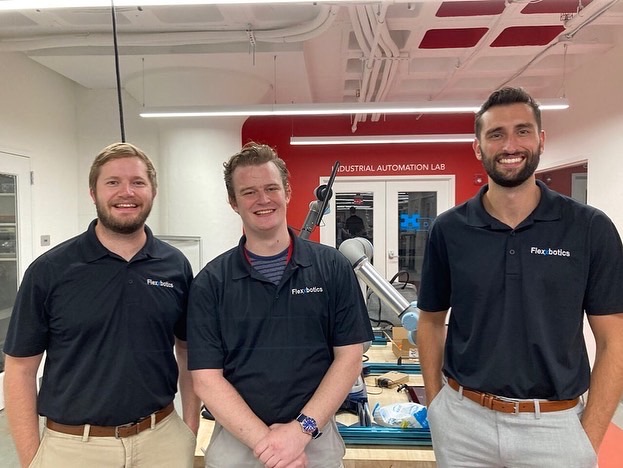BOSTON – May 12, 2022 – Flexxbotics, a pioneer in manufacturing workcell management solutions, announced today that it has completed its $2.9 million Series A funding round. The company will use the capital to accelerate the global commercialization of its cloud-based manufacturing management software platform. This platform seamlessly connects enterprise business systems with the manufacturing floor, creating a path for manufacturers to drive the digital transformation to enable Industry 4.0. The system provides a no-code tool kit that enables discrete manufacturers to have a tighter grip on process control, capture relevant operations data, and automate workcell setup.

Flexxbotics was founded in 2018 by Tyler Bouchard, CEO and Tyler Modelski, CTO (both pictured above). Flexxbotics, a Northeastern IDEA spin-out, launched its first set of robotic productivity tools in 2020 and today these are used in almost one hundred companies world-wide. Flexxbotics advisors include John Joseph, CEO and Co-Founder of Datanomix and Scott Harris, Co-Founder of SolidWorks and OnShape.
According to Tyler Bouchard, “Flexxbotics is focused on the mission of helping discrete manufacturing companies complete the digital transformation. These companies have struggled with the challenge of connecting ERP, MES, and other modern business systems with the legacy production equipment on the shop floor. Our vision is to change that by providing a turnkey tool kit to seamlessly connect robots, CNC machines, PLCs, and other manufacturing with each other through a shop floor communications mesh.”
The Series A financing round was led by eCoast Angels, one of the most experienced and active angel groups in New England. The group focuses on early-stage companies developing advanced technology solutions. According to Peter Schroer, a member of eCoast Angels, “Flexxbotics was appealing to us as investors because they are taking a novel approach to connect information from business systems directly with the devices/machines in shop floor workcells. This has long been a critical gap for manufacturing companies and we expect rapid adoption of their product in the coming months as the company rolls out its new technology.”